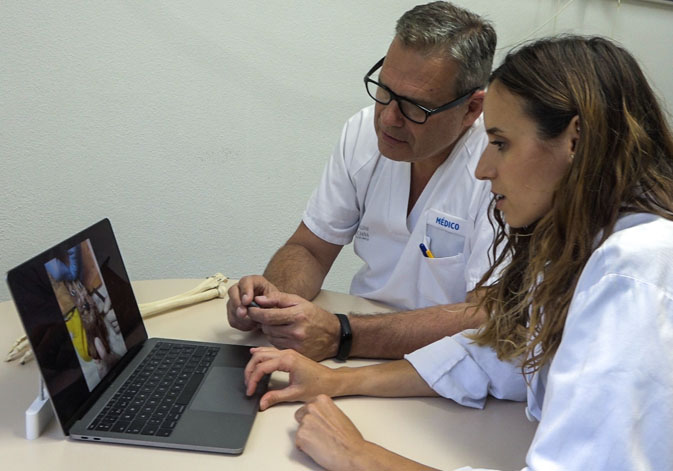The University of Valencia, Fisabio and the Peset University Hospital design a prosthesis for a wrist bone that causes more than 500 fractures a year
- Scientific Culture and Innovation Unit
- July 26th, 2019

Research staff of the University of Valencia, the Foundation for the Promotion of Health and Biomedical Research of the Valencian Community (Fisabio) and the Doctor Peset University Hospital have patented a new prosthesis that offers the possibility of recovering the functionality of the hand after an unconsolidated fracture of the scaphoid bone. It is an alternative when conventional treatments fail to recover this wrist bone.
The scaphoid is the bone injured in almost 80% of the fractures that affect the wrist. Every year, more than 500 cases of scaphoid fracture occur in the Valencian Community (more than 4,500 throughout Spain). Although most of these injuries are adequately recovered by plaster immobilisation and / or bone grafting, between 10% and 26% lead to a situation of non-consolidation with inflammation and severe pain that drastically limits the mobility of the hand.
Daniel Montaner, section chief of the Superior Member Unit of the Doctor Peset University Hospital, project researcher and associate professor of the Department of Surgery of the University of Valencia, highlights: “it is a partial prosthesis that replaces the two proximal thirds (closer to the forearm) of the bone, which are those that are normally most affected by injures, while preserving the distal third (closer to the wrist) of the bone while maintaining stability”.
“Our prosthesis is one of the few models currently available for the scaphoid, but unlike the others, it respects the morphological and morphometric characteristics of the original bone”, explains Patricia Gómez Barbero, a traumatologist at the Superior Member Unit of the University Hospital Doctor Peset, who has led the development of the prosthesis.
Also, unlike other models, the partial prosthesis is stabilised inside the wrist with a novel fixation that gives it a biomechanical behaviour very similar to that of the natural scaphoid bone.
The results obtained after a kinetic and kinematic analysis carried out at the Institute of Biomechanics of Valencia on a prototype of the same prosthesis have been very satisfactory, since they have not found statistically significant differences in joint mobility regarding the uninjured wrist.
Once the prototype has been validated, the research team now plans to build the final version with a ceramic material with characteristics similar to bone to perform new kinetic and kinematic tests before marketing it.
File in: Recerca, innovació i transferència , Facultat de Medicina i Odontologia , Investigació a la UV , Difusió i comunicació científica , Grups de recerca
















